This itinerary for Priorat, Spain is part of our travel resource series. Learn about unique, beautiful, and flavor-prone regions that any discerning traveler and wine enthusiast should explore in his or her lifetime!
We’ve discussed Priorat in the past, and it’s because this region is both so beautiful and so delicious wine-wise that we’re going to discuss an itinerary for visiting Priorat Spain in more detail. Read on to discover an ideal route through the region, several bodegas (wineries) worth visiting, and several tour and accommodation options.
IN THIS GUIDE:
If You’re Near Northeastern Spain, Don’t Miss Priorat
I enjoyed Priorat because of its seclusion. While I may be using the word secluded, it’s a wine region that’s actually incredibly easy to access. However, once you’re there, you feel (and you are), in a foreign land filled with small picturesque villages beset beneath a beautiful mountainous landscape.
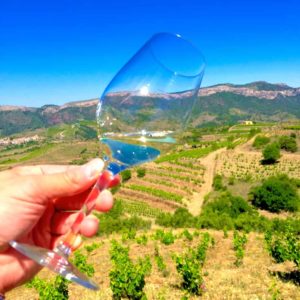
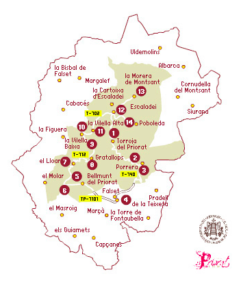
Priorat is a DOQ, which is short for a rare style of wine region known to produce wines of unmatched quality. When you envision Priorat on a map, think of it as a donut hole. The entire Priorat region is surrounded by another wine region called DO Montsant (see map above, courtesy Paisatges del Vi). In Catalan, DOQ stands for Denominació d’Origen Qualificada (Qualified/Controlled Appellation of Origin), whereas DO is a different classification of wine region. You can learn more about the difference between Spanish wine regions and their classifications here.
How To Get to Priorat from Barcelona
Arguably the easiest and cheapest way to get to Priorat is to take a relatively short (under 2 hour) train ride from Barcelona. Many wine enthusiasts, climbers, and hikers alike make this an easy day trip. You can browse current flight deals into Barcelona with Kayak. Search for the best rates on upscale hotels in Barcelona here.
I usually hop on the train at Estació de Sants (Barcelona-Sants) train station. Tickets are around 12 euros, which you can purchase via any of the orange automated ticketing machines at the station. Your final destination will be the MARÇÀ-FALSET station, and usually, the platform is either 9 or 10 at Barcelona-Sants (make sure you’re not hopping on a local train bound for the airport)! You can view/search current train schedules and fares here.
Alternatively, you can take one of the most highly-rated day tours, operated by Spanish Trails from Barcelona to Priorat. This guided experience comes complete with a 3-course lunch at Clos Figueres, 3 wine tasting sessions around Morera de Montsant, Gratallops and Porrera, and much more. This is a better option if you prefer to avoid the logistics of navigating yourself.
Where To Stay
If you’d prefer to stay in Priorat, we list several of our favorite vineyard resorts in this article. Our favorite lodging at the moment is Trossos del Priorat. This upscale property provides an ideal location for not only staying amongst the vines, but it also works as a great base to explore nearby wineries. Perfect for couples, families, and solo travelers.
Looking for more advice on how to get around Priorat once you’re there? Check out this travel guide from our local travel expert.
What To Do in Priorat Spain
So now that you made it into Priorat, where to begin? You could honestly just spend the day driving through Priorat and Montsant admiring the scenery, but let’s make things a bit more interesting and include some ancient monastery visits, wine tours, and jaw-dropping scenic hikes.
First Stop: Visit the Escaladei Monastery
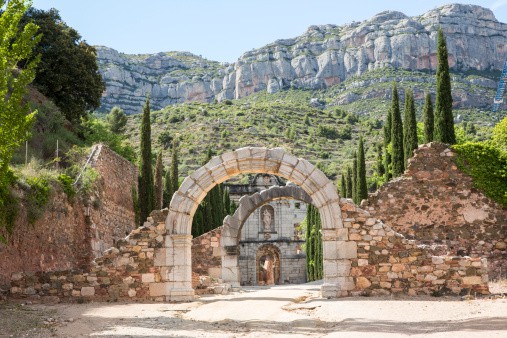
Priorat is steeped in history. The region has been influenced by several ancient religions and cultures for thousands of years. The Escaladie (Catalan Pronunciation) Monastery makes for an ideal first stop because not only will it get you in the adventurous mood and pique your curiosity, but it’s also tucked beneath the hills of Montsant, on the outskirts of Priorat.
The monastery was originally founded by French Carthusian monks around 1285, not far from the Catalonian village of La Morera de Montsant. The monastery was built in one of the most beautiful locations in the region. It’s said that a shepherd had a dream about angels coming down from heaven at the location, on a ladder placed atop a pine tree.
The monastery is no longer in operation (it was a functional monastery until 1835), but the ruins and history of the area are well preserved. Remember that the Christian religion has been widely responsible for the spread of vine-growing across the globe, which was also true here in Priorat, with the Carthusians’ arrival in the Middle Age.
RELATED: 22 Of The Best Rioja Wineries To Visit in Northern Spain
Innovative farming techniques that are still used today were perfected here. Ancient vintners planted their crops on the steep slopes of the surrounding area, which forces the vines to work for their nutriment. This practice is still widely utilized around both Montsant and Priorat today, and is one of the major reasons why wines produced here are so good.
The Carthusian Monastery of Santa Maria d’Escaladei ruins are currently open to visitors. Guided tours and self-exploration of the area are both options. Self-guided tours cost as little as 3.50 euros, while guided tours start at 6.50. The monastery opens at 10:00 am and may be open as late as 7:30 pm depending on the time of year. Winter months close earlier (around 3:30).
Second Stop: The Plateau Village of Siurana
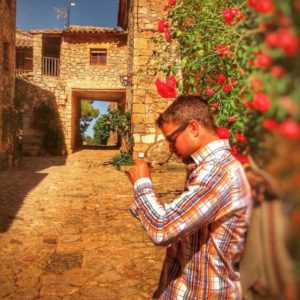
My favorite scenic destination in Priorat is undoubtedly the ancient village of Siurana. This dreamlike mountaintop village was constructed in such a way as to be an unconquerable fortress that oversaw the surrounding Catalonian area. It was originally erected by the Moors, but after a lengthy reconquest by the Christians in the area around 1153AD, it fell. For centuries, Siurana was protected by natural defenses. It was the last Moorish stronghold to fall to the Christians in Catalonia. The legend goes that Abdelazia, the ancient Moorish queen of Siurana, rode with her horse off of the summit of Siurana, rather than be captured by the Christian invaders. It’s also said that her horse left an imprint of his horseshoe on the summit rock before the two leaped to their death.
The rest is history, but we highly recommend you make the hike up to Siurana to enjoy the quaint feel of the surrounding area. The entire village sits beside cobblestone roads and ancient architectural structures. Below the summit, you can find a beautiful flowing reservoir. Swimming and kayaking are both options any day-tripper can explore.
Siurana is also touted as one of Spain’s best climbing and hiking destinations if you’re looking to enjoy an active day. You can also check out these guided tours of Siurana. Following your visit, we recommend you taste some wine :).
Winetraveler Tip: Enjoy hiking and wine? Consider booking a tour near Siurana with our friends, El Brogit! Once you’ve scheduled your experience, be sure to ask them about customization options.
Third Stop: Taste the Wine of Priorat!
Last but not least, and certainly my favorite thing to do in Priorat, is wine tasting! This largely undiscovered yet beautiful and flavor-prone wine region is well worth exploring — and there’s no better vintner to start with than Celler Devinssi.
This past May, I had the opportunity to explore Priorat in detail with Jordi Ustrell of Celler Devinssi. Jordi holds a Ph.D. in Tourism Management and is a certified wine tour guide. He’s also a great friend.
Celler Devinssi is currently crafting beautiful white and red wines intimately tied to the terroir of Priorat.
“We invade minimally the environment, so we let the vineyard just grow in its natural environment, alongside with weeds, flowers, oaks, wild roses, nut and olive trees… There’s fauna galore around: wild boars, rabbits, foxes, eagles, butterflies, bees… We also mostly use local varieties: garnatxa (Grenache) and samsó (Carignan). We also try to highlight the fruitiness and minerality in the wine, with some good acidity, the latter being vital for wines coming from such a hot region, where grapes are prone to excessive ripening and high sugar content (i.e. wines may be around 15% of alcohol),” says Jordi.
If you have the opportunity to visit Priorat, I highly suggest letting Jordi craft a custom, intimate, and private wine tour/tasting for you and yours. Experiences may include, but are not limited to, intense feelings of natural euphoria, wine tasting atop the summit of Siurana, and gastronomic exposure at some very picturesque and quaint Priorat villages. He’ll also be able to take you to other areas in and around Priorat, including the stops we mention throughout this itinerary.
Fourth Stop: Tarragona
Most notable for its Roman history, Tarragona provides a feel unlike any other near Priorat. From ancient Roman Gladiatorial amphitheaters to picturesque Mediterranean beaches, Tarragona is something special. Step back in time.
RELATED: Why You Should Visit Tarragona: Spain’s Ancient Port on the Mediterranean
Given that you’ll likely only be visiting the Priorat region for a day or two, we’ve narrowed down our favorite things to do in Tarragona below. You can also take your pick from any of these incredible Tarragona tours. Including a visit to the city’s famous squares, a visit to the ancient Roman Gladiator Ring / Amphitheater, and a walk along Tarragona’s beaches. Tarragona is also intimately connected with the surrounding landscape and villages through a series of “green” style paths. These public paths have been in use for centuries, and are still used today to promote alternate routes of transportation throughout the region by leaving a smaller carbon footprint.
Things To Do in Tarragona
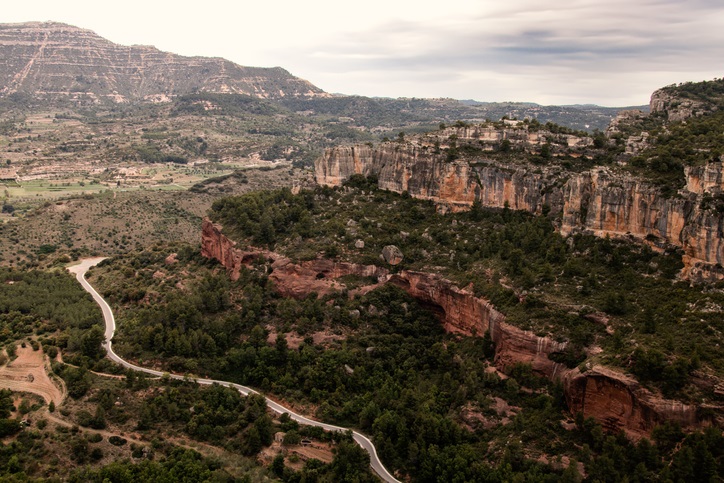
Wander the paths of Tarragona
What’s nice about wandering Tarragona’s ancient dirt pathways is that you can use multitudes of alternative transportation. Walk them, speed hike them, or traverse the trails via mountain bike. You can even go horseback riding. There are over 75 kilometers of paths to explore.
What sets these ancient pathways apart from others in Spain is that they are still the same routes used for hundreds, perhaps thousands of years. French soldiers used these routes to ‘route’ the remaining Moorish strongholds in the Priorat area. Some were used as simple paths merchants would use to bring their goods to local markets.
As you walk them and traverse old quarries and ancient ruins, try to imagine yourself in another age. Some of the more chilling uses of these ancient pathways had to do with ice being taken from the nearby Prades Mountains. It was then used to make old-style brandy drinks to lower the fevers of the sick (tip of the hat to Tarragona Turisme for the knowledge). The paths of Tarragona will give you goosebumps.
Eat in Tarragona
While Tarragona may be most well known for its Roman roots, there’s a food culture here that is certainly worth exploring and savoring.
There’s a particular maritime area called Serrallo, which is loaded with seafood restaurants and to this day is still largely unexplored by international visitors. This port area is characterized by its narrow streets and somewhat simplistic style of maritime architecture. This truly is an authentic fishing village. Both visitors and international tourists can expect to have an authentic, Catalonian seafood experience. According to some of the locals in the area, a favorite restaurant is ‘A Bordo.’
A Bordo is quaint, with just enough capacity for 30 people. Upon entering, foodies can expect a maritime style of decor that helps warm the senses for a great seafood-based meal. Don’t be shy and dive into their anchovy croquettes and fresh mussels with a side of crisp local white wine.
Stop by the Ancient Roman Amphitheater
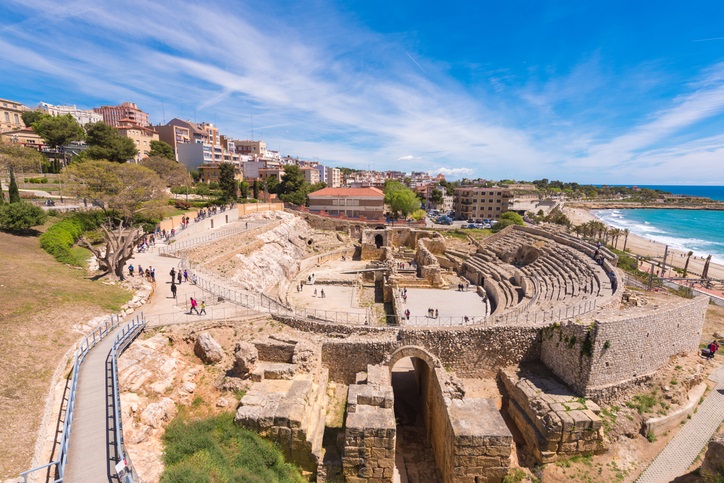
Like many of the gladiator rings designed during and before the 2nd century, this ancient piece of architectural magic overlooks the Balearic / Mediterranean Sea. What makes this particular gladiator ring so special is that the entire structure, including the seating was carved out of the bedrock that covered the coastal area. It was able to hold a maximum of 14,000 people. The site is steeped in history and was used for gladiatorial duels, as well as fights between wild animals. It was also the location where Bishop Fructuosoand and his clerics were burned alive in 259 AD.
Visit the Beaches of Tarragona
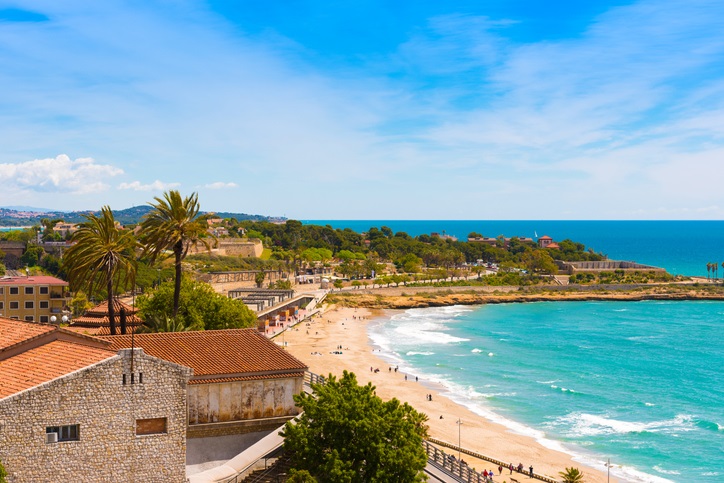
Last but not least, how about a visit to a series of beaches that are somewhat unrecognized when compared to the nearby city life of Barcelona and Sitges. There are a large number of beaches, both large and small, as well as numerous picturesque small coves along the 15-kilometer coastline. Not to mention, the water itself is for the most part crystal clear and shimmers in the sun.
Not unlike the summer months along many of the coasts in the United States, the “Costa Daurada” (Gold Coast) beaches or Tarragona are ideal to visit between June and September.
More Ways To Explore Catalonia & Priorat
How To Plan The Perfect Priorat Travel Experience
How To Get To, From, and Around Priorat
Learn About Catalonia’s Various Wines and Wine Regions
9 Essential Wine Bars and Tapas Restaurants in Barcelona
You are reading “The Best Priorat Wine Region Itinerary” Back To Top
things to do in Spain, Priorat wine region travel guide: the best wine country wine tasting experiences
If you enjoyed this guide, make sure you register to become a Winetraveler for free! You’ll get access to all of our content and interact with other Winetravelers and for travel inspiration around the world. Be sure to follow along with us on Twitter and Instagram as we continue to feature more exciting destinations.
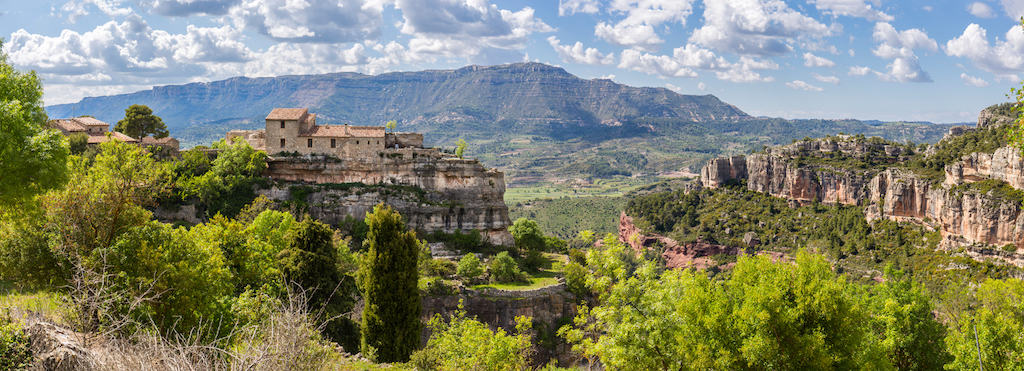
This article is great and has me excited to visit this region. One question, you say it is easy and cheap to take a train from Barcelona to Priorat, but what do you recommend for transportation for getting around in the priorat region?
Hi Brittany,
Happy to hear you found the article so helpful! Priorat is a very special place and I have no doubt you’ll have an amazing time. Regarding the train, it’s definitely an affordable option. When we visited Priorat, we had a pre-scheduled wine tour setup with someone who was able to drive us around the region and picked us up from the train station. Depending on your travel dates, we may be able to check into this for you. If you’re planning on spending more than one day in Priorat, you might consider renting a car in Barcelona and making the drive up. Public transportation in the area is relatively limited.
Cheers,
Greig
That’s great. We will be in Barcelona from sept 28-3, then again october 6-8 (we are spending a few days in between in valencia). If you have any recommended tour guides for the area in priorat, that would be wonderful!
Thank you!
This article is great and has me very excited to visit the region. One question: you said it is easy to get to priorat by train from Barcelona, but what do you recommend for transportation once in the Priorat region? Will I need a car or are there drivers for hire?
Could you give me advice as to how to get around in the Priorat region? We will be travelling with the train from Barcelona but not sure how to get around once we are there.
Any advice would be much appreciated.
[…] How to Get to Priorat […]
[…] Exclusive wine tour in the Priorat wine region (near the city of Tarragona). It not only has tremendous wines, it has dramatic landscapes and historic villages. An itinerary for the Priorat. […]
[…] Exclusive wine tour in the Priorat wine region (near the city of Tarragona). It not only has tremendous wines, it has dramatic landscapes and historic villages. An itinerary for the Priorat. […]
Really nice article about Priorat